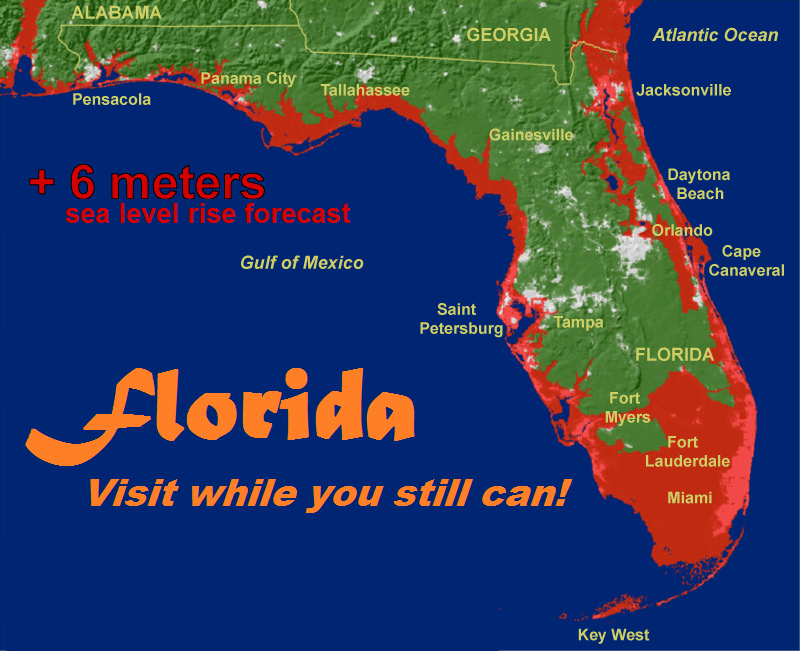Florida’s Retro Energy Policy
Legal Planet: Environmental Law and Policy 2017-10-30

Florida is the paradigm of the ostrich with its head in the sand. It may be the most vulnerable state to climate change. Yet, the state government is assiduously ignoring the problem though some cities and counties and South Florida are keenly aware of the risks. Even after Hurricane Irma, the governor still professed complete uncertainty on the subject: “Clearly our environment changes all the time, and whether that’s cycles we’re going through or whether that’s man-made, I wouldn’t be able to tell you which one it is.”
Here’s what we know about the risks, from the pre-Trump EPA (back when they still believed in science):
“The Florida peninsula has warmed more than one degree (F) during the last century. The sea is rising about one inch every decade, and heavy rainstorms are becoming more severe. In the coming decades, rising temperatures are likely to increase storm damages, harm coral reefs, increase the frequency of unpleasantly hot days, and reduce the risk of freezing to Florida’s agriculture.”
“Changing climate is also likely to increase inland flooding. Since 1958, the amount of precipitation during heavy rainstorms has increased by 27 percent in the Southeast, and the trend toward increasingly heavy rainstorms is likely to continue. More intense rainstorms can increase flooding because rivers overtop their banks more frequently, and more water accumulates in low-lying areas that drain slowly.”
There is also the likely increase in hurricane intensity, due to warmer waters and higher evaporation rates.
What is the state going in response to these threats. Basically, zilch. Florida doesn’t have a renewable portfolio standard or even voluntary targets. It doesn’t provide any subsidies for renewables. About all that the state has done is to adopt a net metering policy, with a middle-of-the-road policy in interconnecting with the local grid, as well as energy efficiency standards for new buildings. In an effort to sabotage solar energy, major utilities supported a state initiative that appeared to favor solar but actually undermined net metering. Fortunately, the initiative didn’t pass, but utilities are still trying to choke off rooftop solar by cutting reimbursement for electricity sold back to the grid.
Not surprisingly, renewables aren’t a major part of the energy picture. According to the state energy agency, “Florida was second only to Texas in 2014 in net electricity generation from natural gas, which accounted for 61% of Florida’s net generation; coal accounted for almost 23%, the state’s nuclear power plants accounted for 12%, and other resources, including renewable energy, supplied the remaining electricity generation.” If you do the math, that left renewables with a 4% share, minus whatever energy the state gets from miscellaneous sources like fuel oil. The Energy Information Agency now lists Florida as getting 7% of its energy from renewables, but it turns out that three-quarters of that is from burning biomass. Solar is about 0.2% of the power supply, according to the Georgetown Climate Center.
As Holly has pointed out, real ostriches don’t stick their heads in the sand to avoid danger. If any of them ever had that behavior, they were eliminated from the gene pool long ago. So in reality, as she says, “ostriches are not that stupid.” But the state of Florida seems to think that the same strategy will work for it.